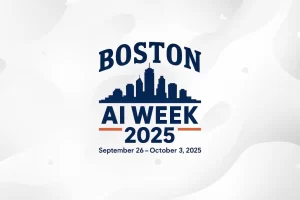NeurIPS: A Practical Guide to Navigating the Conference That Shapes Machine Learning

The Conference on Neural Information Processing Systems (NeurIPS) stands as one of the most influential gatherings for researchers, engineers, students, and industry practitioners working on machine learning, artificial intelligence, statistics, and computational neuroscience. From its origin as a cross-disciplinary meeting in 1987 to its current multi-track international presence, NeurIPS has become both a stage for cutting-edge research and a practical ecosystem where careers are shaped, collaborations form, and ideas turn into tools.
This guide helps readers understand what NeurIPS is, how it works, and how to get the most value from attending, submitting work, or participating remotely. It blends historical context, practical advice, and specific tips to guide newcomers and experienced attendees alike.
What NeurIPS is and why it matters
NeurIPS began as an interdisciplinary forum inspired by neural-network research, bringing together neuroscientists, information theorists, and learning theorists. Over decades it shifted toward machine learning and statistics while retaining ties to neuroscience and cognitive science. Today, NeurIPS ranks alongside ICLR and ICML as a top conference for impactful AI research.
The meeting mixes several formats: refereed papers presented as oral or poster sessions, invited talks, tutorials, workshops, competitions, and an industry exposition. Organizers stage parallel workshops after the main program, and the conference maintains a strong emphasis on reproducibility, ethics, and community inclusion. Recent editions introduced additional efforts such as a Responsible Reviewing Initiative and expanded accessibility options.
Where and when
NeurIPS runs annually in December. The 2025 main meeting returns to San Diego (with a second physical location in Mexico City and an affiliated European meeting — EurIPS). Historically, the conference moved from Denver to Vancouver, and later held editions across North America, Europe, and virtual formats during the pandemic. Organizers announce detailed dates, deadlines, and registration information via the conference website and newsletters.
How the program is organized
NeurIPS operates a complex editorial and review structure: program chairs, area chairs, senior area chairs, reviewers, and multiple tracks (papers, tutorials, workshops, competitions, datasets and benchmarks, position track, ethics reviews, and educational materials). That layered structure aims to balance rigor, topical coverage, and logistical coordination across thousands of submissions.
A few points to note about submission and review:
- Papers undergo peer review and, if accepted, become part of the conference proceedings. The proceedings have historically been published under “Advances in Neural Information Processing Systems.”
- The conference experimented with review reproducibility — for example, the 2014 “NIPS experiment” duplicated a fraction of submissions into independent review processes to measure variability. Results sparked discussion about subjectivity and randomness in peer review and led to initiatives to improve review quality.
- NeurIPS also introduced the Position Paper track and a Code of Ethics, along with specific calls for ethics reviewers, reflecting growing attention to societal impacts.
Who organizes NeurIPS
NeurIPS runs under the Neural Information Processing Systems Foundation, a non-profit that oversees the conference. Leadership rotates via elected general chairs and program chairs drawn from academia and industry. The organizing committee covers many roles: general and program chairs, tutorial and workshop chairs, communications, diversity and inclusion, datasets and benchmarks, and more. In 2025, the committee included chairs and assistants from universities, research institutes, and industry labs, demonstrating the conference’s broad institutional footprint.
What to expect at the conference
A typical NeurIPS experience blends formal sessions with informal encounters. Attendees find:
- Keynote and invited talks from leading researchers.
- Oral presentations selected from top submissions.
- Poster sessions offering deep dives and 1:1 interaction.
- Tutorials that teach methods, tools, and best practices.
- Workshops and competitions that explore focused problems or replicable benchmarks.
- An exposition hall where companies showcase tools, platforms, and recruitment opportunities.
- Socials and affinity events that support community building (e.g., Black in AI, Queer in AI).
Practical guide: preparing to attend or submit
Planning ahead increases returns from NeurIPS. Below are practical steps aimed at prospective authors, attendees, and first-time visitors.
Before you go (or submit)
- Read the Calls for Papers and track-specific calls carefully. Each track has its own deadlines and submission rules (papers, tutorials, workshops, datasets and benchmarks, competitions, position papers, education materials).
- Observe important dates: submission deadlines, author notification dates, camera-ready deadlines, and early-registration cutoffs. NeurIPS publishes these dates on the website and in newsletters.
- Prepare a presentation and visual materials early. For posters, design concise, readable figures and practice a 1–3 minute pitch.
- If you plan to exhibit or recruit, reserve booth space and review exhibitor guidelines. Exhibitor registration often fills early.
- For international attendees, check visa requirements and hotel booking suggestions. NeurIPS offers guidance on visas and maintains recommended hotel lists.
At submission time (for authors)
- Follow submission formatting and ethical guidelines strictly. NeurIPS enforces formatting and plagiarism policies.
- Include reproducibility materials: code, data, and supplementary content. Organizers and reviewers value reproducibility and transparency.
- Anticipate reviewer feedback by running ablation studies and robust evaluation. Clear writing and well-motivated experiments help reviewers understand the contribution.
- Consider submitting to the Position Track if your contribution emphasizes ideas, critique, or societal implications rather than new technical results.
At the conference
- Schedule with intent. Build a mix of sessions: core papers that align with your interests, tutorials for methodological depth, and workshops for niche topics.
- Visit posters—poster halls often offer the best chance for long-form discussion with authors.
- Network proactively. Bring business cards or a mobile contact method; many attendees rely on poster conversations and hallway chats to start collaborations.
- Attend affinity events and diversity sessions to meet peers from underrepresented groups and learn about community efforts.
- Plan breaks to avoid burnout. Conference days run long; conserve energy to make the most of evening socials and workshops.
If you cannot attend in person
- Track online content. NeurIPS maintains recorded talks and proceedings for remote access; many tutorials and invited talks get posted.
- Engage virtually. Follow session live streams, join virtual Q&A when offered, and connect on social platforms using official hashtags.
- Use proceedings and preprints to keep up with accepted work. Most authors post preprints on arXiv and link to code repositories.
Ethics, review, and community dynamics
NeurIPS evolved its policies to handle ethical concerns and community inclusion. The conference runs ethics reviews for submissions that raise potential societal risks, and it maintains a Code of Conduct and Code of Ethics. Diversity and inclusion chairs coordinate efforts to support accessibility, financial assistance, and affinity events.
The conference also confronts challenges in peer review. The NIPS 2014 review experiment revealed substantial variability in reviewer judgments, spurring conversation about review quality. Since then, NeurIPS has pursued reviewer training, senior area chair oversight, and initiatives like Responsible Reviewing to improve fairness and clarity.
Named lectures and historical highlights
NeurIPS honors influential researchers with named lectureships such as the Posner and Breiman Lectures. Past speakers include Yann LeCun, Yoshua Bengio, Judea Pearl, and other leaders whose talks often summarize trends and set research agendas.
Quick reference table: NeurIPS at a glance
| Topic | Key facts |
|---|---|
| Full name | Conference on Neural Information Processing Systems (NeurIPS) |
| Founded | 1987 |
| Frequency | Annual (December) |
| Main content | Peer-reviewed papers, invited talks, tutorials, workshops, competitions, expos |
| Proceedings | Advances in Neural Information Processing Systems (published with various publishers over time) |
| Typical audience | Researchers, students, industry practitioners, policymakers |
| Notable features | Ethics reviews, reproducibility emphasis, affinity groups, industry expo |
| 2025 locations | San Diego Convention Center (main), second physical location in Mexico City, affiliated EurIPS in Europe |
Sample conference timeline (what an attendee might experience)
| Timeframe | Activity |
|---|---|
| June–Sep | Calls issued for papers, workshops, tutorials, competitions |
| Sep | Submission deadlines for certain tracks (e.g., education materials, social apps) |
| Sep–Oct | Author notifications for papers and position track; camera-ready deadlines |
| Early Oct | Early registration deadline |
| Dec (conference week) | Main conference talks, posters, tutorials, workshops, expos, socials |
| Post-conference | Video uploads, proceedings finalized, community follow-ups |
Tips for getting noticed and building impact
- Present clearly: Aim for concise slides and an engaging poster. Describe the problem, method, and why results matter in the first minute.
- Share artifacts: Publish code and datasets. Provide clear instructions to help others reproduce results.
- Connect with media: If work has broader impact, coordinate with press offices and prepare plain-language summaries.
- Follow up: After the conference, email collaborators, share slides and code, and post highlights on professional networks.
- Volunteer: Reviewing and mentoring opportunities enhance visibility and help improve the community’s reviewing culture.
Common pitfalls and how to avoid them
- Overambitious scope: Keep contributions focused and well-evaluated. A tight, well-validated claim beats vague, broad promises.
- Neglecting reproducibility: Include data, code, and hyperparameters; a lack of artifacts reduces credibility.
- Ignoring community standards: Respect the Code of Conduct and prepare for ethics review if your work can affect people.
- Poor presentation: A great paper can lose impact if the talk or poster fails to convey key points quickly.
Final thoughts
NeurIPS combines rigorous peer review, expansive programming, and active community engagement. The conference shapes research directions and fosters cross-pollination among academia and industry. Whether someone submits a paper, attends as a student, or joins as an exhibitor, careful preparation amplifies the value of participation.
NeurIPS rewards clarity, reproducibility, and thoughtful engagement. By planning ahead, following submission and ethical guidelines, and making time for conversation and learning, attendees can turn a few conference days into long-term professional growth and meaningful contributions to machine learning and AI.




